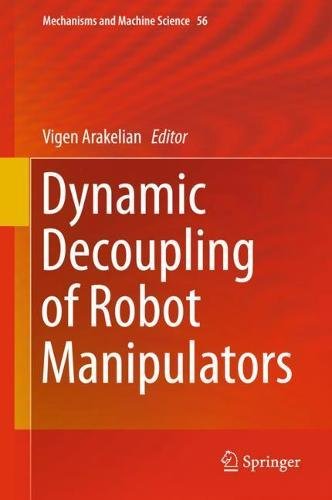

Most ebook files are in PDF format, so you can easily read them using various software such as Foxit Reader or directly on the Google Chrome browser.
Some ebook files are released by publishers in other formats such as .awz, .mobi, .epub, .fb2, etc. You may need to install specific software to read these formats on mobile/PC, such as Calibre.
Please read the tutorial at this link: https://ebookbell.com/faq
We offer FREE conversion to the popular formats you request; however, this may take some time. Therefore, right after payment, please email us, and we will try to provide the service as quickly as possible.
For some exceptional file formats or broken links (if any), please refrain from opening any disputes. Instead, email us first, and we will try to assist within a maximum of 6 hours.
EbookBell Team

0.0
0 reviewsThis book presents the latest results in the field of dynamic decoupling of robot manipulators obtained in France, Russia, China and Austria.
Manipulator dynamics can be highly coupled and nonlinear. The complicated dynamics result from varying inertia, interactions between the different joints, and nonlinear forces such as Coriolis and centrifugal forces. The dynamic decoupling of robot manipulators allows one to obtain a linear system, i.e. single-input and single output system with constant parameters. This simplifies the optimal control and accumulation of energy in manipulators. There are two ways to create the dynamically decoupled manipulators: via optimal mechanical design or control.
This work emphasises mechatronic solutions. These will certainly improve the known design concepts permitting the dynamic decoupling of serial manipulators with a relatively small increase in total mass of the moving links taking into account the changing payload. For the first time such an approach has been applied on serial manipulators. Also of great interest is the dynamic decoupling control of parallel manipulators. Firstly, the dynamic model of redundant multi-axial vibration table with load has been established, and, secondly, its dynamic coupling characteristics have been analyzed.The discussed methods and applications of dynamic decoupling of robot manipulators are illustrated via CAD simulations and experimental tests.